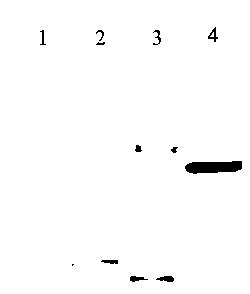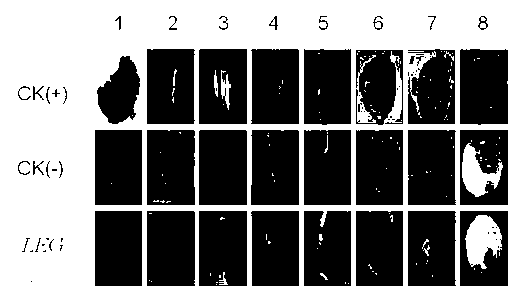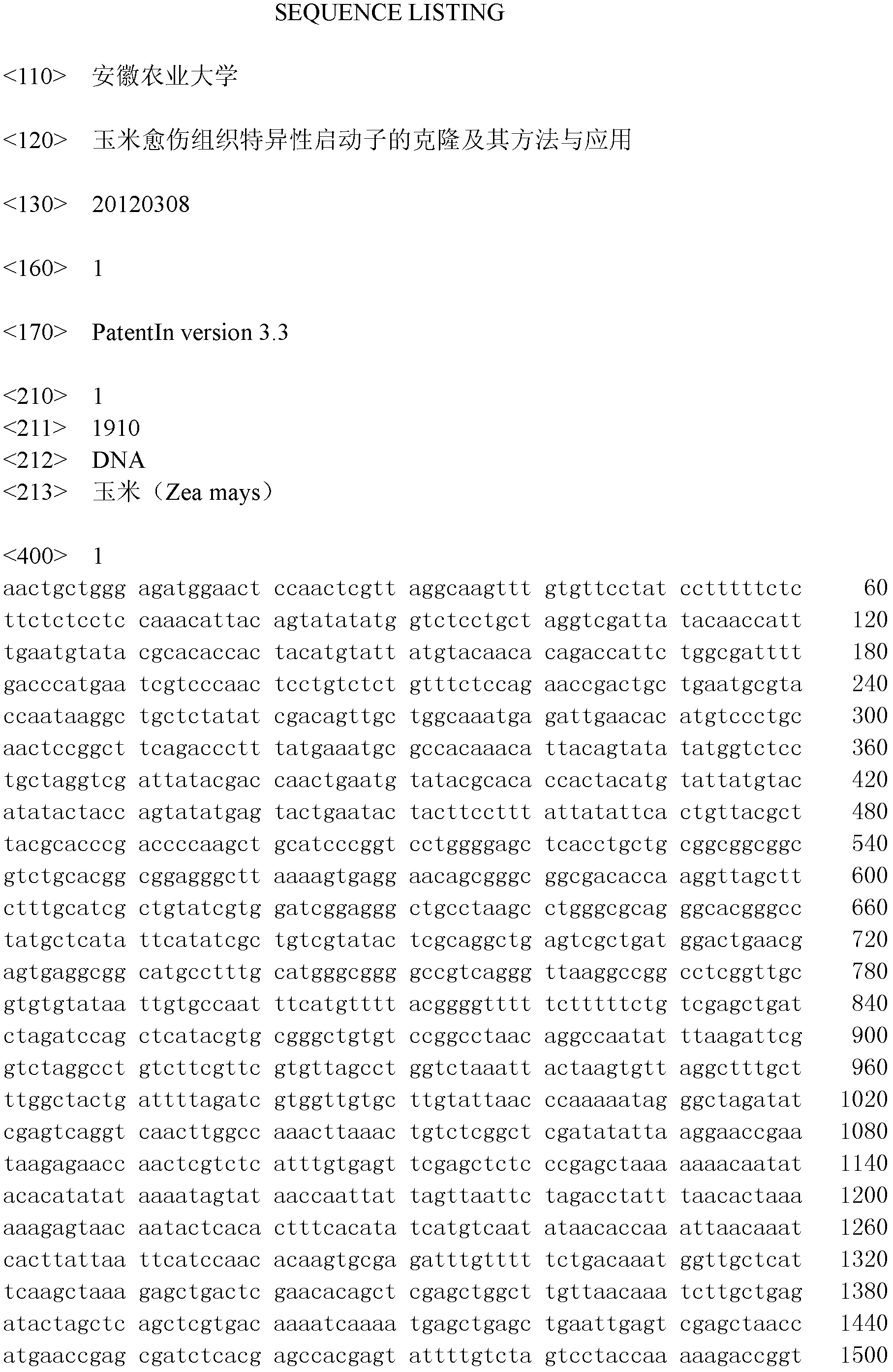Corn callus specific promoter and application
A technology of callus and promoter, applied in application, recombinant DNA technology, angiosperms/flowering plants, etc., can solve problems such as energy waste, increased cell burden, and accumulation of metabolites, so as to avoid unnecessary waste and increase area The effect of high expression amount and sensitivity
- Summary
- Abstract
- Description
- Claims
- Application Information
AI Technical Summary
Problems solved by technology
Method used
Image
Examples
Embodiment 1
[0018] Example 1. Maize callus specific promoter LEG clone
[0019] According to the full-length sequence of the LEG promoter published on the NCBI website, design primers for PCR amplification of this fragment, and add Hin dIII (AAGCTT) restriction site, downstream add Nco I (CCATGG) restriction site
[0020] The primer sequences are as follows:
[0021] Primer 1 (upstream primer): 5'- CCCAAGCTT AACTGCTGGGAGATGGAACT-3'
[0022] Primer 2 (downstream primer): 5'- CATGCCATGG CTTTGCTTTGCCGTGATAGG-3'
[0023] Using the extracted corn B73 genomic DNA (extracted by Quanshijin Plant Genome Kit) as a template, PCR amplification was performed with primers 1 and 2, and the PCR reaction system was:
[0024] 10×PCR buffer 5 μL dNTP (10mM) 4 μL Primer 1 2 μL Primer 2 2 μL DNA template 1 μL Taq enzyme 0.2 μL wxya 2 o to 50 μL
[0025] The PCR reaction conditions were: pre-denaturation: 94°C 6min; denaturation: 94°C 45s; ...
Embodiment 2
[0027] Example 2. LEG Establishment of gene promoter expression vector
[0028] Connected to the pEASY T1 Cloning Vector LEG Fragment (small fragment) with CaMV35S promoter (large fragment) on Agrobacterium binary vector pCAMBIA1301 with HindIII and Nco Carry out double digestion with enzyme I, in a water bath at 37°C for 3 hours, and digest 30 μL of the system as follows:
[0029] large (small) fragment 22 μL BSA 3μL 10×buffer K 3μL Hind III 1μL NCOI 1 μL total capacity 30μL
[0030] Ligate the above size fragments with T4DNA ligase, and ligate at 25°C for 2~12h. The ligation system is as follows:
[0031] large fragment 1 μL small fragment 7 μL 10×ligase buffer 1 μL T 4 DNA ligase 1 μL
[0032] Take 3~5 μL of the constructed vector pCAM–p LEGPlasmids were gently injected into 200 μL EHA105 Agrobacterium competent cells, ice bathed for 5 minutes, liquid nitrogen quick-frozen for 1 m...
Embodiment 3
[0033] Example 3. Agrobacterium-mediated transformation of rice
[0034] Agrobacterium tumefaciens (Agrobacterium a mediated) Agrobacterium-mediated method will contain pCAM–p LEG Agrobacterium expressing the vector was introduced into rice.
[0035] 3.1 Obtaining callus from mature rice embryos
[0036] Before the experiment, the mature seeds used in the experiment were dried under strong sunlight for 3-4 hours and then shelled. First wash with sterilized water until clear, then soak in 75% ethanol for 5 minutes, then use sterilized water, hypochlorous acid and Tween prepared sterilized water (specific ratio: sterilized water: hypochlorous acid = 1:1, Total volume: Tween=1mL:1ul) Soak for 30min, shake continuously during the period, so as to sterilize the surface, then rinse with sterile water until the water becomes clear, then put the mature seeds on sterile filter paper to absorb the water After that, they were placed on the callus induction medium and cultured at 26...
PUM
 Login to View More
Login to View More Abstract
Description
Claims
Application Information
 Login to View More
Login to View More - R&D
- Intellectual Property
- Life Sciences
- Materials
- Tech Scout
- Unparalleled Data Quality
- Higher Quality Content
- 60% Fewer Hallucinations
Browse by: Latest US Patents, China's latest patents, Technical Efficacy Thesaurus, Application Domain, Technology Topic, Popular Technical Reports.
© 2025 PatSnap. All rights reserved.Legal|Privacy policy|Modern Slavery Act Transparency Statement|Sitemap|About US| Contact US: help@patsnap.com



